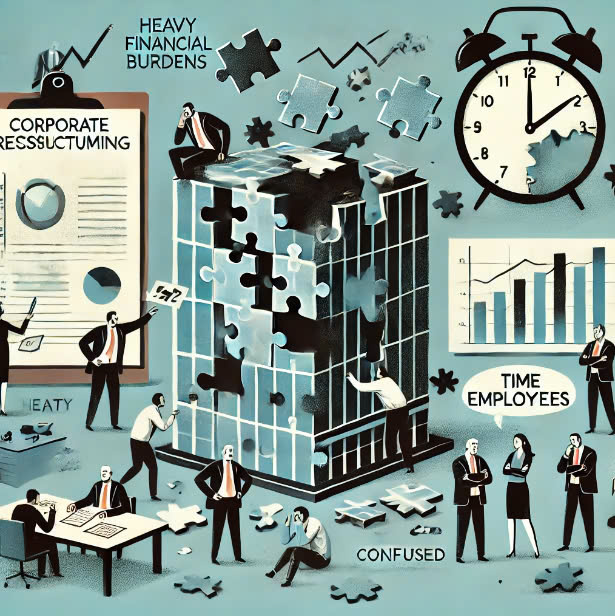Restructuring a business is a necessary strategy when facing market changes, competitive pressures, or the need to improve operational efficiency. However, not every restructuring process goes smoothly. The following limitations and difficulties are often the reasons why many businesses struggle to achieve their expected goals.

1. Internal resistance and loss of morale:
One of the biggest challenges in restructuring is internal resistance, especially from employees. Concerns about job loss, role changes, or uncertainty about the future can lead to a loss of motivation and decreased productivity. Lack of clear communication about the goals and benefits of restructuring also contributes to this resistance.
2. High costs and financial burden:
Restructuring often comes with high costs, including consulting fees, severance packages, investment in new technology, and retraining expenses. For financially struggling businesses, additional expenses for restructuring can worsen their financial situation.
3. Lack of consensus among leadership:
One of the main reasons restructuring fails is conflicting viewpoints among members of the leadership team. Without agreement on vision and strategy, the business can fall into stagnation or deviate from its intended direction.

4. Challenges in changing corporate culture:
Corporate culture is a core factor that determines how an organization operates. However, changing culture is one of the most difficult parts of restructuring. Long-standing work habits, traditional approaches, or conservative mindsets can hinder the acceptance of new changes.
5. Risk of losing customers and strategic partners:
During the restructuring process, businesses may experience disruptions that lead to the loss of customers or strategic partners. Changes in structure, products, or services can make customers concerned about quality or the ability to continue collaboration.
6. Time and delays in implementation:
The restructuring process can be lengthy, causing businesses to face delays in their operations. This can affect short-term profits and put pressure on the entire system.
Restructuring a business is a difficult but necessary decision to maintain and grow in an ever-changing business environment. The challenges and limitations in the restructuring process can create significant pressure on businesses, but if managed well, it can be an opportunity for businesses to improve operational efficiency and enhance competitive capabilities. The success of the restructuring process depends on thorough preparation, tight management, and consensus from all parties involved.
If your business is facing challenges in restructuring, please contact us to receive advice and support from top experts in this field.
Hotline
Hotline